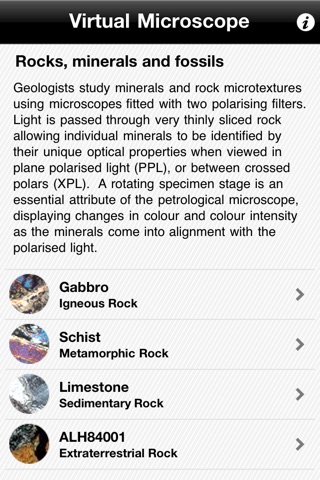
Rock samples from a new Open University course in Geology are shown in this demonstration of the Virtual Microscope.
Students on the course learn how to identify the spectrum of common rock-forming minerals and the geological processes that lead to their formation. This application allows you to examine examples of common igneous, metamorphic and sedimentary rocks. You can see minerals such as olivine, plagioclase feldspar and garnet both in hand specimens and with a polarising microscope.
We have also included a famous meteorite that was found in Antarctica in 1984. Chemical analysis suggests that it is a fragment of rock from Mars, and NASA scientists startled the world in 1996, when they reported they had found evidence within it of primitive bacterial life.
Geologists study minerals and rock microtextures using microscopes fitted with two polarising filters. Light is passed through very thinly sliced rock allowing individual minerals to be identified by their unique optical properties when viewed in plane polarised light (PPL), or between crossed polars (XPL). A rotating specimen stage is an essential attribute of the petrological microscope, displaying changes in colour and colour intensity as the minerals come into alignment with the polarised light.



